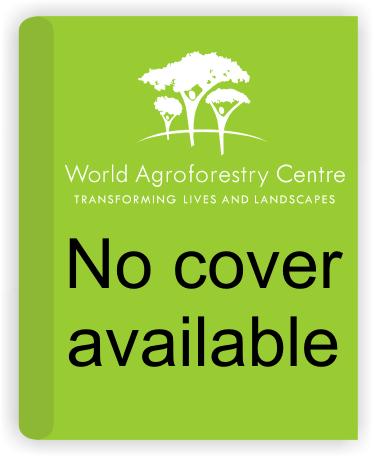| Journal Article |
 |
|
| Article Title | “Vulnerability hotspots”: Integrating socio-economic and hydrological models to identify where cereal production may decline in the future due to climate change induced drought | | Author | Evan D.G. Fraser, Elisabeth Simelton, Mette Termansen, Simon N. Gosling and Andrew South | | Year | 2012 | | Journal Title | Agricultural and Forest Meteorology | | Institution | Elsevier B.V. | | Pages | 1-11 | | Call Number | JA0448-12 | | Keywords | Adaptive capacity index, Drought index, Climate change vulnerability, Food security, Food
Agriculture, Soil moisture |
|
| Abstract: |
| The purpose of this paper is to identify which of the world’s cereal producing regions are likely to becomevulnerable to climate change over the 21st century by identifying those regions that will be (1) exposed toclimatic stress and (2) have a limited capacity to adapt. First, we use a global hydrological model to identifyregions likely to be exposed to drought, defined here as a location where the available soil moisture isprojected to decline by the 2050s and 2080s relative to the mean soil moisture observed between 1990and 2005. Second, we use agricultural, meteorological and socio-economic data to develop models ofadaptive capacity and run these models to show where adaptive capacity is likely to decline by the 2050sand 2080s relative to the baseline period of 1990–2005. Third, we contrast the hydrological and adaptivecapacity model outputs to identify “vulnerability hotspots” for wheat and maize. Here, a vulnerabilityhotspot is defined as a region that the models project as likely to experience both a decline in adaptivecapacity and in available soil moisture. Results from the hydrological model project significant drying inmany parts of the world overt the 21st century. Results from the adaptive capacity models show thatregions with the lowest overall adaptive capacity for wheat include much of western Russia, northernIndia, southeastern South America, and southeastern Africa. In terms of maize, regions with the lowestadaptive capacity include the northeastern USA, southeastern South America, southeastern Africa, andcentral/northern India. When taken together, this study identifies five wheat and three maize growingregions likely to be both exposed to worse droughts and a reduced capacity to adapt. For wheat, theseare: southeastern USA, southeastern South America, the northeastern Mediterranean, and parts of centralAsia. For maize, our analysis suggests that vulnerability hotspots are: southeastern South America, partsof southern Africa, and the northeastern Mediterranean. |
|